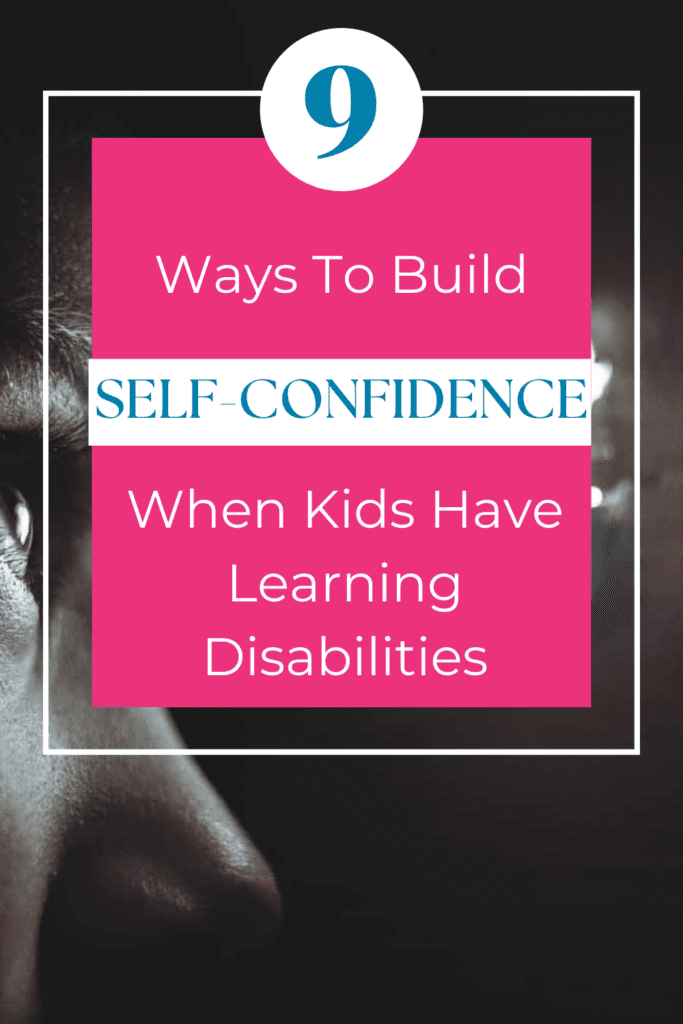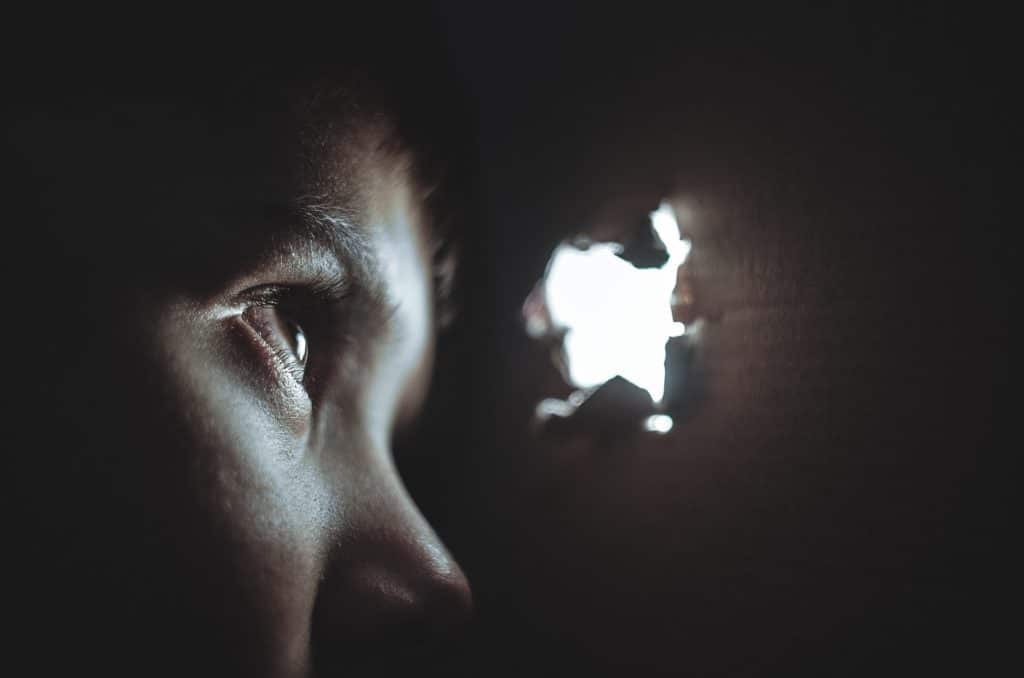Have you ever watched your kid do something that was annoying or even frustrating but then realised you do the exact same thing?
This was Maggie’s exact problem too. She complained to me that her son thought he was stupid. It didn’t take much digging to figure out that Maggie as well struggled in school and had her own issues with a poor self-image. Her negative attitude was contagious.
The thing is that it doesn’t matter if it’s a learning disability, ADHD, dyslexia, SPD, autism or any other acronym, moms always express how much they want to build their child’s self-confidence back up.
That starts with her own attitude towards ourselves – our own ability to be patient with ourselves and to be aware that our kids are watching us. More than that though, we need to get kids understanding what is really going on with their struggles and to shift their perspective if we want them to do better.
Understanding that self-confidence is earned is key – but so is teaching your child about how their brain works and the natural learning process.
1. Teach Them About the Brain
Believe it or not kids are more willing to learn about their brain than you realise especially if you present it in the right way. I found it quite fascinating how kids of all ages love to learn about the brain, and how theirs is possibly working differently.
Once kids start to understand the basics of how their brain works, why there might be weak connections and most importantly that the brain is much like plastic or a muscle and that it can change – they can have an incredible sense of optimism and willingness to try new therapies or interventions.
The other aspect that be immensely helpful is to help kids understand how their brain goes about building new neurons and new connections. Years ago, I worked with a 13-year-old boy and I explained that it was challenging activities that built new connections in the brain.
I further explained that when we learn something new, we build a connection that is akin to a dirt road, which is when we are not great at an activity and have to really focus to do it.
I then explained that as we practiced, the connection turned into a nice street road and eventually a two-lane highway and finally when we master a skill, like riding a bike – that connection becomes a superhighway.
For children who struggle with impulsivity and aggression, it can be extremely helpful to teach about the neo-cortex which is where reasoning and decisions occur versus the amygdala, or the ‘guard dog’ which is reactive and necessary in survival purposes.
When kids understand that the guard dog can become over-activated at every little threat, it can help them to understand they are not bad, but that their brain simply needs some exercises and interventions to help
You can find excellent, and easy-to-understand videos about brains on YouTube on how the brain develops, grows, and manages emotions.
2. Stop Comparing, Everyone Has their Challenges
One reason why kids with learning and behaviour struggles can have low self-esteem is because it can seem from their perspective that everyone else is doing better. It’s important to stress not to compare themselves to other kids since everyone has struggles.
While they might struggle more than other kids in certain areas that our society values more, it is important for kids to recognise that everybody has areas of weakness. One client helped her daughter to realise that while her younger brother could read better, her younger brother was extremely shy and had a harder time with social skills.
3. Focus on their Superpowers
Focusing on what your child can do and even their area of genius is critical. Turning your child‘s strengths into superpowers is crucial so they can see that just as there are two sides to every coin, there are two sides to every label.
I talked about this extensively in a previous article about how ADHD could also be Highly Energetic Creative Disposition (HECD) and instead of Sensory Processing Disorder we could call it Sensitive Empathy Disposition (SED).
4. Role Models
One strategy that can really help children with increasing their self-esteem is for them to learn about other famous or successful people that share their struggles.
When it comes to learning disabilities, my favourite story is Barbara Arrowsmith’s. Society is filled with incredible stories of people succeeding despite their dyslexia, learning disabilities, ADHD and autism.
Pointing out these successes as often as possible can help your child to stay motivated and not allow their difference to be a reason to feel unworthy.
5. Uncover Hidden Strengths
You and your child might already know about some of your strengths but there are likely many your child takes for granted.
Online quizzes that help to identify and uncover strengths can be immensely beneficial in not only helping your child recognise their unique talents but they can also help you both to know what strengths can be built on and potentially be turned into passions.
6. Learning is Hard
Kids who struggle with learning often think the moment they encounter frustration with learning that it’s due to their disabilities.
They can often get to a point where the minute learning gets hard they shut down because they assume they have hit a wall and that it is because they are ‘stupid’. They don’ realise that for most people learning new concepts or skills is a challenge, even those they consider ‘smart’.
These kids need to understand that part of the learning process is frustration. This is known as the ‘learning dip’. You know that spot where you feel stuck and confused and like you’re just not going to get it. And then if you keep at it – you do get out of the dip.
As a teacher and a mom, I started making a point to share with my daughter and students when I was in my own learning dip. Whether it was frustration with learning how to play a new song on the guitar, or trying to figure out a crochet pattern, or learning how to use a new computer program, I made my child and students aware that learning was hard sometimes – even for me.
7. Advocate
One of the worst stressors for your child at school is when they feel that no one is meeting their needs. A child might not understand that classrooms are overcrowded with children with special needs and very few supports or extra staff.
This can leave them feeling that their teacher just doesn’t care about them. I remember as a teacher knowing I was not meeting many of my students’ needs and how invisible and unworthy they must have felt.
This is why as a parent, ensuring that your child’s needs are being met at school and advocating for them can help to ensure they are not left feeling like their needs don’t matter.
8. Talk About Anxiety & Depression
Since kids with dyslexia, ADHD and learning disabilities are at such a higher risk of depression and anxiety it is important to teach them about both low self-esteem as well as how depression and anxiety can impact them.
Encouraging kids to talk about their feelings, learning how to process them as well as doing low self-esteem building activities is critical so that these kids do not let mental health issues get in the way of their success and happiness.
9. Fix the Problem
If there is one gold standard way to address low self-esteem and low self-confidence it is to help your child experience the confidence that comes from overcoming challenges and being successful.
Addressing the root cause of why your child is struggling rather than patch jobs approaches is key. This is why I am so passionate about therapies that nourish and strengthen weak connections in the brain which is exactly what I do in my program The Full Potential Formula.
If you feel like you’re ready to watch your child’s self-confidence soar on all levels – book a free Better Brain Breakthrough call here.


